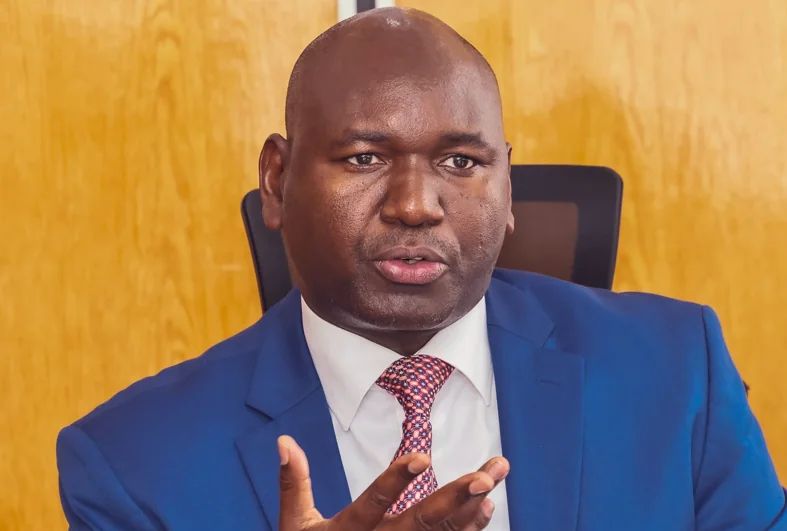How to invest for college during market swings

Investing in choppy markets, especially with an unpredictable president at the helm, can be distressing. It can be even more so if you are relying on these investments to pay for something as important as your child’s college tuition, and you need the money in the foreseeable future.
Plenty of busy parents found themselves in this position, reminded by the recent market plunge that college enrollment was creeping up on them, and some may not have dialed back their risky stock positions, or at least not enough.
But situations like this serve as another reminder: Market uncertainty is a constant, and yet it is part of the game we are forced to play to finance our future selves’ needs and wants. Markets periodically plunge because of global financial crises, pandemics, technology bubbles, and when the president of the United States seemingly pushes it over the edge with his index finger, which is essentially what happened after President Donald Trump announced an aggressive tariff plan that sparked a trade war.
If you have money in a 529 college savings plan — or in another type of investment account — now is the time to reassess whether your mix of stocks and bonds are appropriate for your time frame and your stomach for risk.
If you cannot afford to lose a particular pot of money, and you need it soon, it is time to develop an exit strategy. For everyone else, you have the luxury of time to come up with a better long-term plan.
I need the money now (or really soon). Now what?
If you need the money in less than a year, it shouldn’t be in stocks, period. Some financial planners said they’d even swallow some losses now (by moving money into cash, even if your investments are lower), but there are several other things you might consider as well.
“I’d suggest looking at whether they have other resources to cover the first year — like cash flow, gifts or student aid — while they give investments some time to recover,” said Daniel Milks, a financial planner in Greenville, South Carolina.
If you borrow more than you anticipated during the first year to avoid touching your investments, keep in mind that you can use up to $10,000 of money inside a 529 to pay off federal and many private student loans early (per beneficiary over their lifetime). Another idea: Temporarily pause or reduce savings to pay more tuition directly.
I have some time. What should I do?
Sometimes the best solution is the simplest — the one that reduces complexity and decision-making and puts things on autopilot. Sure, there may be more precise investing strategies, but there’s a perfectly fine one called a target-date fund.
Target-date funds — whose mix of investments gradually get more conservative as a college enrollment date approaches — can be helpful for people who want a hands-off approach. But that means you’ll need to do a bit of work upfront to analyze the funds, or hire someone to help you out (a fiduciary, always).
Many 529 college savings plans provide these funds on their investment menu, but they’re not all created equally. Funds from different providers that have the same enrollment date can have different mixes of investments, and some may be riskier because they have more aggressive stock allocations
.
Don’t forget to consider the type of bond and cash investments it holds, too. Bonds typically serve as a ballast when stocks drop, but they are not impervious to all shocks, as we saw recently.
You’ll also need to understand how the fund evolves over the years as you approach the enrollment date. How quickly does it change? What does it look like when college is just five or three years away? Would you be comfortable with that mix, at that point in time, if the market dropped 30%? And how does that compare with similar funds? What are the costs? (Stick with low-cost index funds, which simply track the performance of large swaths of the market and do not try to beat it).
CJ Stermetz, a financial planer and founder of EquityFTW, a firm in San Jose, California, said that the funds work especially well in times like these, because parents don’t have to worry. They know their college money is being whisked into safer investments as time marches on.
Indeed, the target enrollment date funds are similar to those targeting a retirement date, but the former sheds stocks more quickly given the compressed time frame: The funds generally start with 95% in stocks and 5% in bonds but then shift about 5 percentage points of the stocks into bonds each year, Stermetz explained. If you were buying a Vanguard fund for a newborn now, with a enrollment date of 2043, that’s where you’d start.
But by the time college is three years away (like Vanguard’s 2028/2029 fund), there’s about 25% in stocks, 54% in bonds and another 20% in cash equivalents.
Once college is just a year or two out (2026/2027), 19% of investments are in stocks, 47% in bonds and 34% in cash equivalents, while the target enrollment for the 2024/2025 academic year has just 15% in stocks.
“This may not be ‘optimal,’ in the sense that it’s a one-size-fits-all product, but most parents are fine with that since it means it’s one less thing they have to think about,” Stermetz said.
Keep in mind that if a fund’s enrollment date that aligns with your child’s feels too aggressive, you can choose one for an older child; it will have less invested in stocks.
If you cannot afford to lose any money, Eric Maldonado, a financial planner in San Luis Obispo, California, suggests another approach: When your child is in high school, put the cost of the corresponding year of college into cash or money market funds. For example, if your child is a freshman in high school, put your freshman college tuition in cash, and so on.
“Whatever your mix of strategies, the key is to shift your mindset as college nears,” said Mallon FitzPatrick, head of wealth planning at Robertson Stephens. “At some point, the goal isn’t to grow the money anymore. It’s to make sure it’s there when you need it.”














